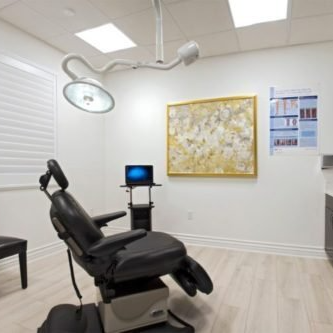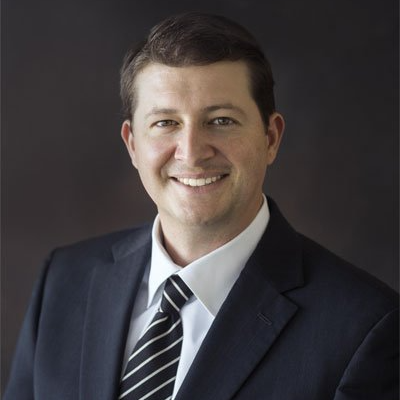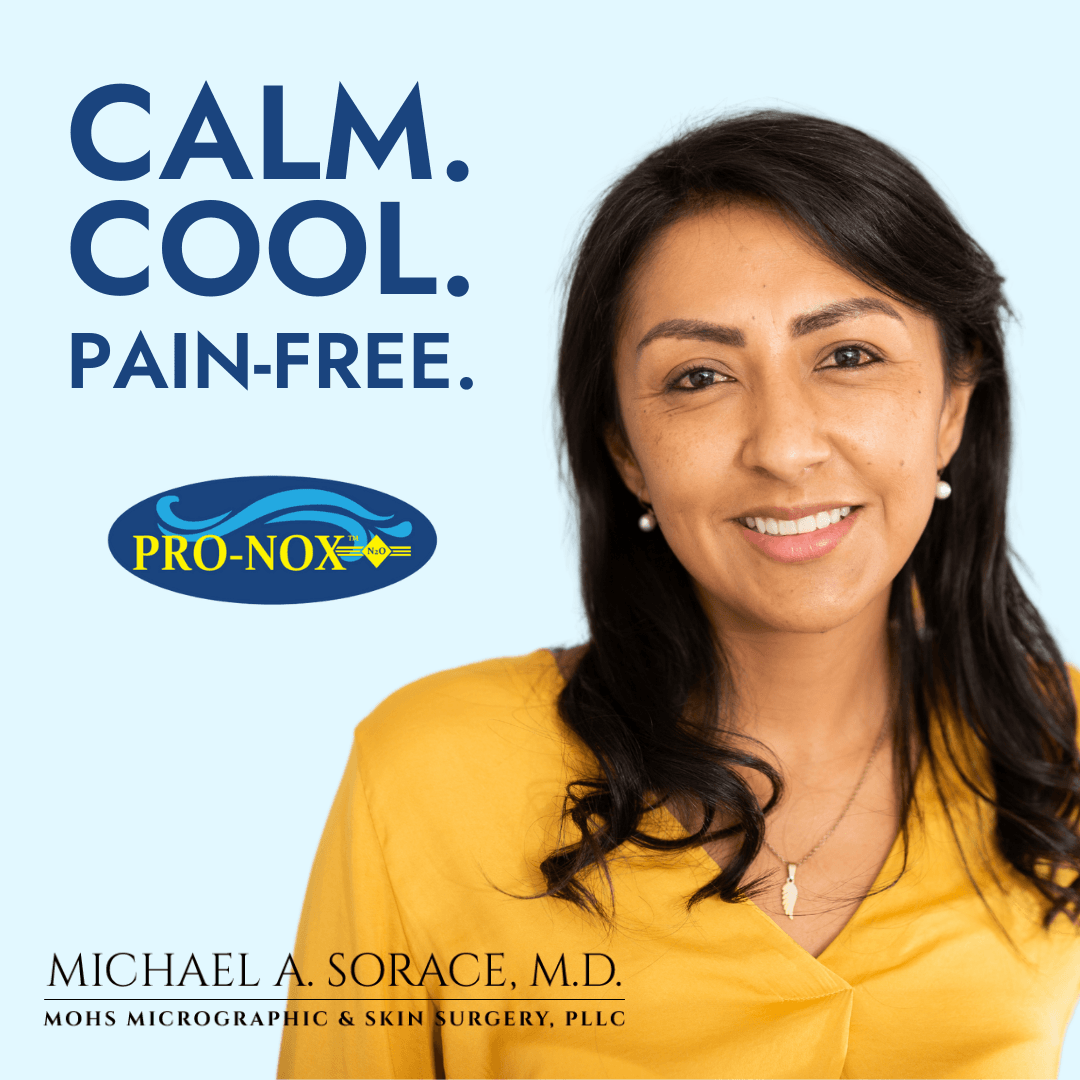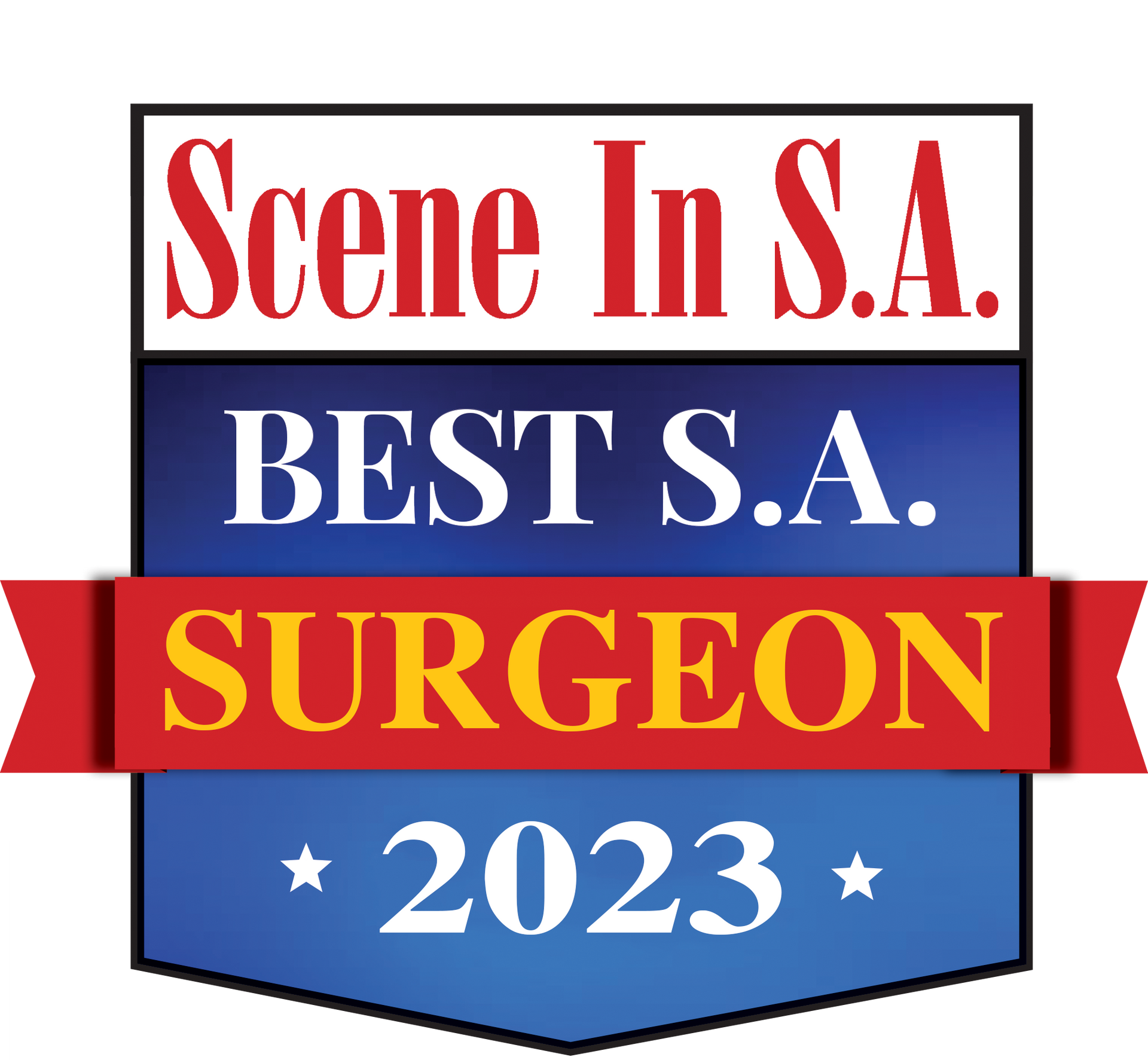Mohs surgery
Mohs Micrographic Surgery is the most effective treatment for skin cancer. It is a sophisticated surgical technique designed to maximize the chance for cure and minimize the amount of scarring.
The basic idea of Mohs surgery is rather simple. The area where the skin cancer is located will be removed. The patient then returns to the waiting area while the tissue is being processed here in our laboratory. This will usually take about an hour. Dr. Sorace will then take a look at the specimen and examine all the edges and the deep tissue of the removed skin under the microscope. When the edges and depth are free of tumor, then the skin cancer has been completely removed. If the skin cancer is still detected at the edge or base of the piece it will be mapped. At this point the patient is brought back in to undergo further removal. Dr. Sorace will be able to go back precisely where the residual tumor lies and avoid damage to otherwise healthy surrounding skin.
Once the skin cancer is completely removed, the area of skin involved by the cancer may need to be repaired. The type of repair depends on the size, location, and extent of the skin cancer. The repair options may include letting the area heal in or closing the wound with stitches. Dr. Sorace will discuss these options with you in the office. The ultimate goal is to cure your skin cancer and with minimal scar.

Why a Mohs College Fellowship-trained Mohs Surgeon?
The decision to allow any physician to participate in your care is an important one and should not be made without a thorough understanding of what distinguishes one surgeon from another. No matter who you choose to see for your care, you should seriously consider the education and experience of your doctor. Choosing a doctor to perform your Mohs surgery is no different.
Many dermatologists had some experience with Mohs surgery either during residency or in brief courses after residency. After residency, any dermatologist is allowed to perform Mohs surgery without any further training. A small number of dermatologists choose to expand their knowledge base and skill set after residency by undertaking an additional 1 or 2 years of training known as a fellowship. During this time, a dermatologist receives extensive training in all aspects of skin surgery including excisions, Mohs surgery, frozen section pathology, and complicated reconstruction. A fellow must perform at least 500 cases of Mohs surgery to become a member of the American College of Mohs Surgery. Only members of the American College of Mohs Surgery have completed at least one full year of training beyond residency to specialize in surgical dermatology.
Dr. Michael Sorace completed his fellowship at the University of Texas Southwestern Medical Center under the tutelage of the world renowned Mohs surgeon, Robert Stanley Taylor. As a fellow, Dr. Sorace performed well over 2000 procedures. It is this extensive experience that allows Dr. Sorace to provide the highest level of care to his patients.

Pain and Anxiety Relief
Did you know that we offer Pro-Nox™ with certain procedures, to ease your anxiety and relieve your pain? Pro-Nox™ is the only device that allows patients to respond to their discomfort and anxiety when they need it! With this device, you choose when to inhale a combination of 50% oxygen and 50% nitrous oxide, which works quickly to ease pain and anxiety. Fast and easy pain and anxiety relief.





